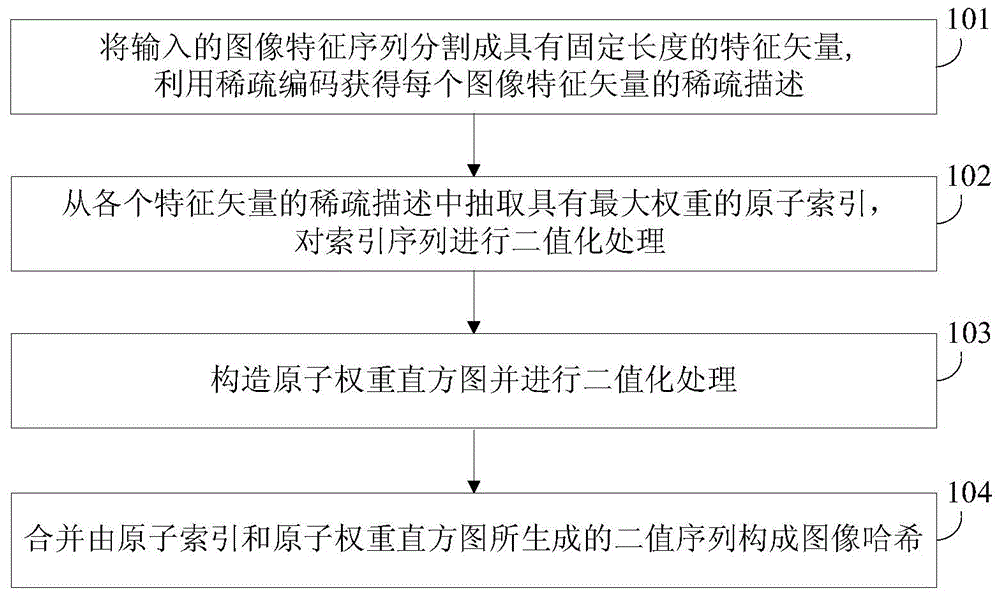Characteristic encoding method for recognizing digital image content
A content recognition and feature coding technology, which is applied in image coding, character and pattern recognition, image data processing, etc., can solve the problems of image hash robustness limitations, scalar quantizer feature disturbance sensitivity, etc., to reduce hash storage Space, easy to implement, low computational complexity effects
- Summary
- Abstract
- Description
- Claims
- Application Information
AI Technical Summary
Problems solved by technology
Method used
Image
Examples
Embodiment Construction
[0020] In order to make the purpose, technical solution and advantages of the present invention clearer, the implementation manners of the present invention will be further described in detail below.
[0021] In order to achieve a brief and robust description of image content, an embodiment of the present invention proposes a feature encoding method for image content recognition, see figure 1 and figure 2 , see the description below:
[0022] 101: Divide the input image feature sequence into feature vectors with a fixed length, and use sparse coding to obtain a sparse description of each feature vector;
[0023] Wherein the steps are specifically:
[0024] 1) For the input feature sequence V={v 1 ,...,v N} for vectorization, and split the feature sequence into a series of feature vectors with dimension M: y i , i=1,2,...,N / M. Specific values of M and N are set according to requirements in practical applications, and are not limited in this embodiment of the present in...
PUM
 Login to View More
Login to View More Abstract
Description
Claims
Application Information
 Login to View More
Login to View More - R&D
- Intellectual Property
- Life Sciences
- Materials
- Tech Scout
- Unparalleled Data Quality
- Higher Quality Content
- 60% Fewer Hallucinations
Browse by: Latest US Patents, China's latest patents, Technical Efficacy Thesaurus, Application Domain, Technology Topic, Popular Technical Reports.
© 2025 PatSnap. All rights reserved.Legal|Privacy policy|Modern Slavery Act Transparency Statement|Sitemap|About US| Contact US: help@patsnap.com



